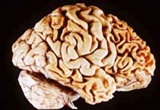
|
 |
The mechanism of manganese neurotoxicity detected
Aug 29, 2006 - 2:55:00 AM, Reviewed by: Dr. Rashmi Yadav
|
|
�These findings may provide an explanation for some of the differences between manganism and idiopathic Parkinson�s disease, as well as why patients with manganese-induced neurological symptoms do not seem to respond to traditional Parkinson�s therapies."
|
By Johns Hopkins University Bloomberg School of Public Health,
 |
| Dopamine neurons in the brain of animals exposed to manganese do not release dopamine when stimulated, suggestive of a dysfunctional dopamine system. |
For decades, scientists have known that chronic exposure to high concentrations of the metal manganese can cause movement abnormalities resembling symptoms of Parkinson�s disease, but apparently without the same neuron damage characteristic of Parkinson�s patients. Now, researchers from the Johns Hopkins Bloomberg School of Public Health and Thomas Jefferson University have discovered a potential explanation to why these neurological symptoms may occur with manganese exposure. The study found that dopamine neurons in the brain of animals exposed to manganese do not release dopamine when stimulated, suggestive of a dysfunctional dopamine system even though the neurons do not show the damage present with Parkinson�s disease. Dopamine is a key neurotransmitter necessary for normal motor function. In addition, the researchers found that effects of manganese exposure occurred at blood concentrations in the upper range of levels documented in children and adults with environmental or occupational exposure. The study is published in the online version of the journal Experimental Neurology.
Manganese is a metal used in welding, battery making and in other industrial settings. In Canada, it replaced lead as a gasoline additive. Manganese, in the form of MMT, is approved in the United States as a gasoline additive but is not in use. The symptoms of �manganism� include behavioral and memory disturbances as well as Parkinson�s-like symptoms. Tremors occur with movement as opposed to the resting tremors typical of Parkinson�s disease.
�These findings may provide an explanation for some of the differences between manganism and idiopathic Parkinson�s disease, as well as why patients with manganese-induced neurological symptoms do not seem to respond to traditional Parkinson�s therapies,� said the study�s lead author, Tom�s R. Guilarte, PhD, a professor in the Department of Environmental Health Sciences at the Bloomberg School of Public Health.
For the study, researchers observed a group of animals that were given incremental levels of manganese. The animals were monitored for behavioral changes and Positron Emission Tomography (PET) was used to assess various markers of dopamine neurons in the brain. According to the study, in addition to decreased in vivo dopamine release, manganese exposure produced subtle deficits in behavior and fine motor function.
�More work is needed to understand the relationship between the changes in behavior and the alterations in the dopamine system,� explained Jay S. Schneider, professor of pathology, anatomy and cell biology at Thomas Jefferson University and co-author of the study.
�There are other aspects of manganese neurotoxicity that this on-going study is examining that are likely to change the way that we view the risk of manganese exposure today,� said Guilarte.

- The study is published in the online version of the journal Experimental Neurology.
�Nigrostriatal dopamine system dysfunction and subtle motor deficits in manganese-exposed non-human primates� was written by Tom�s R. Guilarte, Ming-Kai Chen, Jennifer L. McGlothan, Tatyana Verina, Dean F. Wong, Yun Zhou, Mohab Alexander, Charles A. Rohde, Tore Syversen, Emmanuel Decamp, Amy Jo Koser, Stephanie Fritz, Heather Gonczi, David W. Anderson and Jay S. Schneider.
Funding was provided by a grant from the National Institute of Environmental Health Sciences.
|
For any corrections of factual information, to contact the editors or to send
any medical news or health news press releases, use
feedback form
Top of Page
|
|
|
|